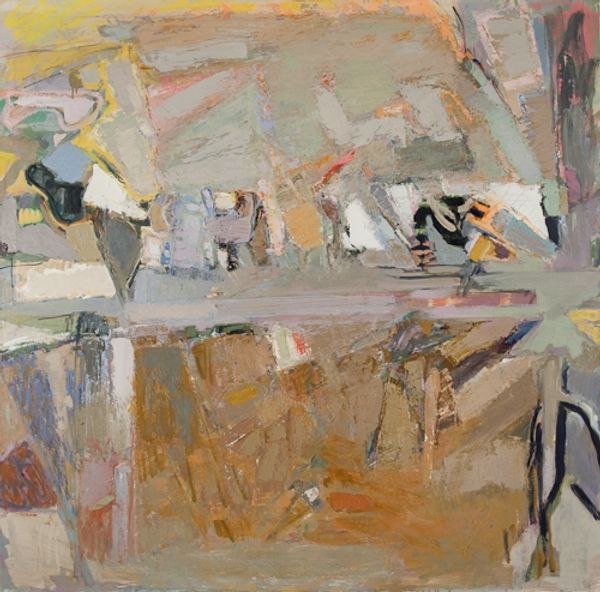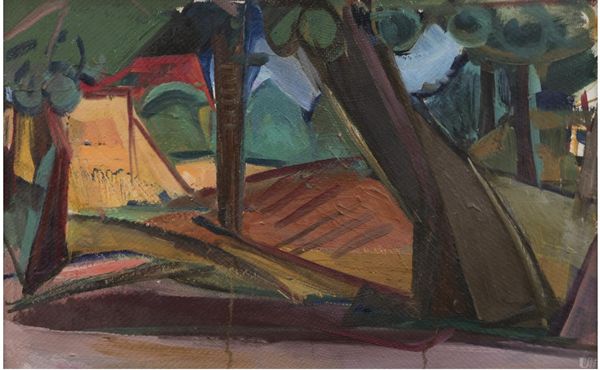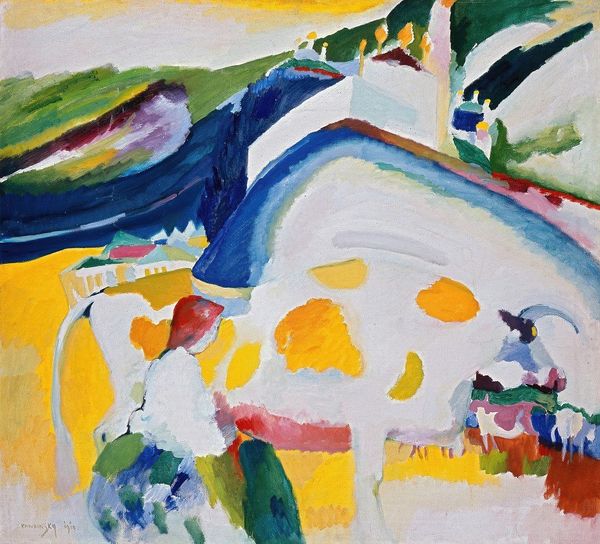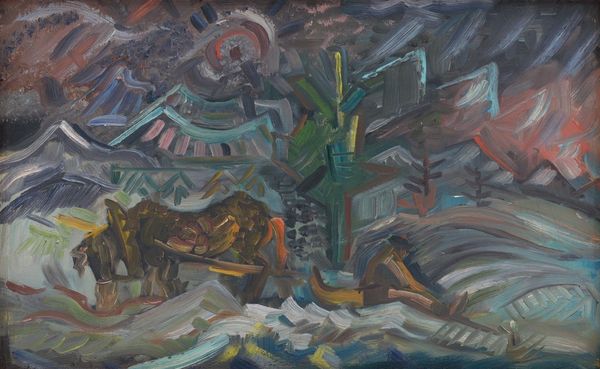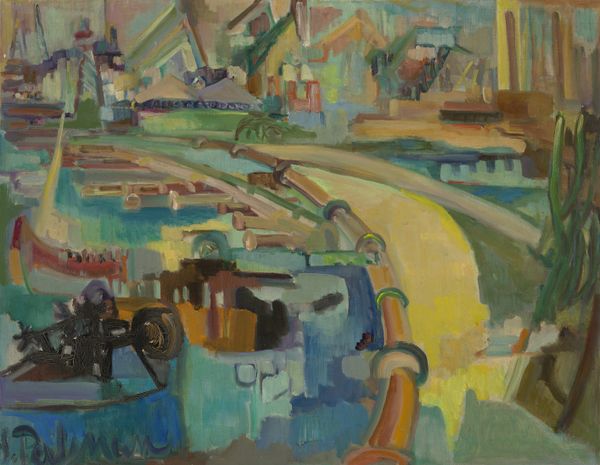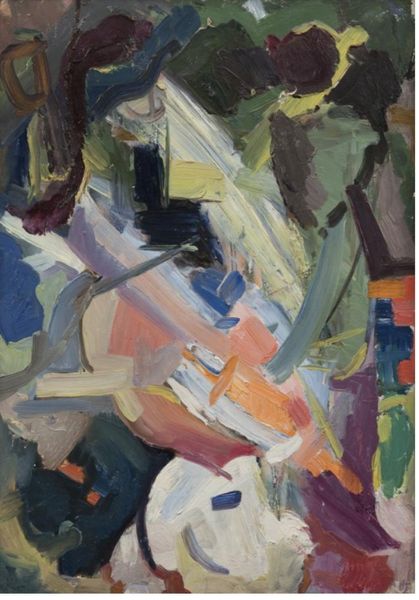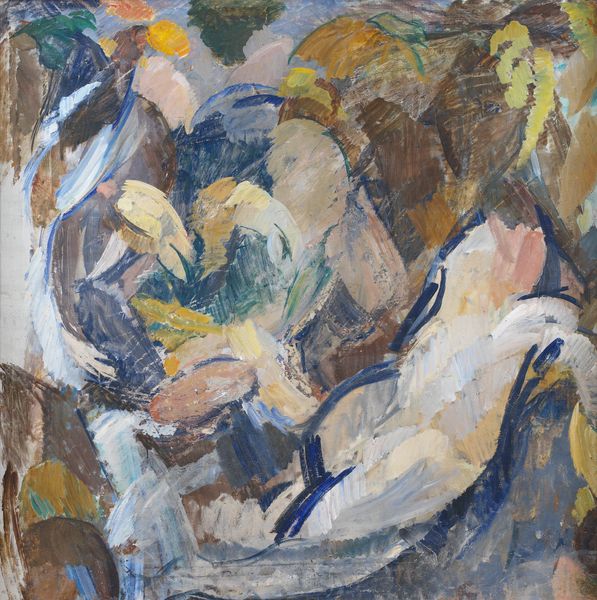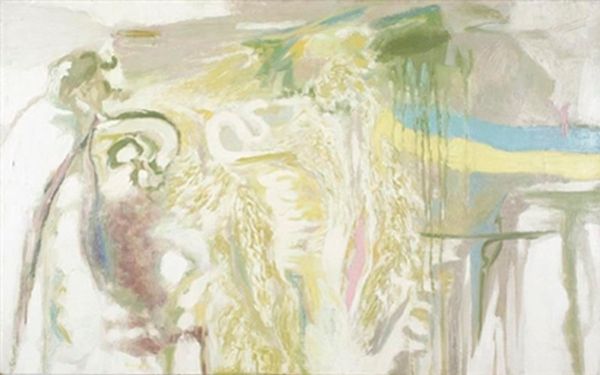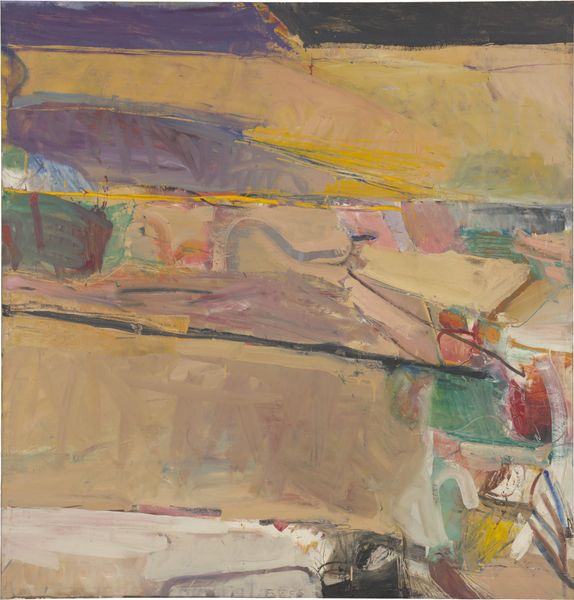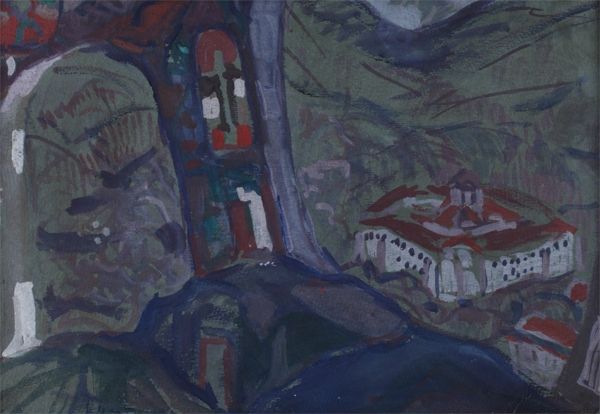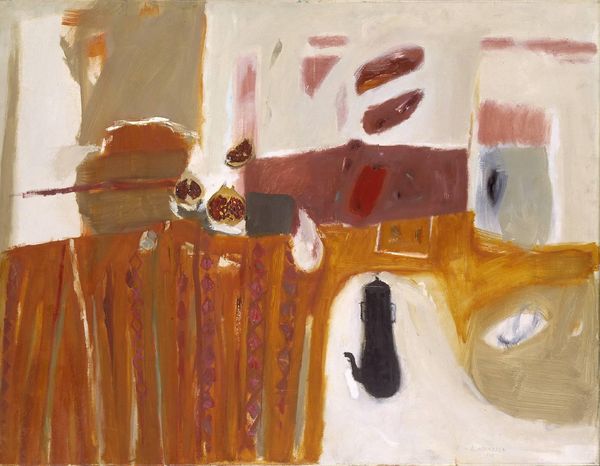
Dimensions: support: 508 x 610 mm frame: 738 x 844 x 120 mm
Copyright: © The estate of Ivon Hitchens | CC-BY-NC-ND 4.0 DEED, Photo: Tate
Curator: Oh, hello, let’s dive in! Editor: We’re looking at Ivon Hitchens’ "Balcony at Cambridge." It's an oil on canvas, depicting exactly what the title says, a view from a balcony, probably at Cambridge. There's a cat! I find the mood quite dreamlike. What strikes you most? Curator: Dreamlike is perfect! The soft focus, the blurred lines... it's like memory itself. Notice how the interior and exterior spaces blend, that dissolving boundary. Does it evoke a specific time of day for you? Editor: Perhaps late afternoon, when the light softens? It does feel like time is slowing down. I love the cat. Curator: The cat anchors it, doesn't it? A still point in a fluid world. Perhaps Hitchens is showing us how the most ordinary things can become extraordinary through feeling. What do you think? Editor: I see that, definitely. It’s about capturing a feeling more than a scene. Thanks! Curator: My pleasure! It’s all about the feels, isn’t it?
Comments
tate 6 months ago
⋮
http://www.tate.org.uk/art/artworks/hitchens-balcony-at-cambridge-t03122
Join the conversation
Join millions of artists and users on Artera today and experience the ultimate creative platform.
tate 6 months ago
⋮
Hitchens was a member of the Seven & Five Society, a key group of modern-minded artists of the 1920s. Landscape and still-life were staples of British painting during that decade. Views of landscapes through windows were particularly common among Seven & Five members. Theirs was an idea of nature as viewed from a distance, ordered and calm, as if the landscape becomes a part of the still-life that often appears in the foreground. Such a desire for peaceful order might reflect the impact of the First World War of a few years earlier. Gallery label, July 2007
